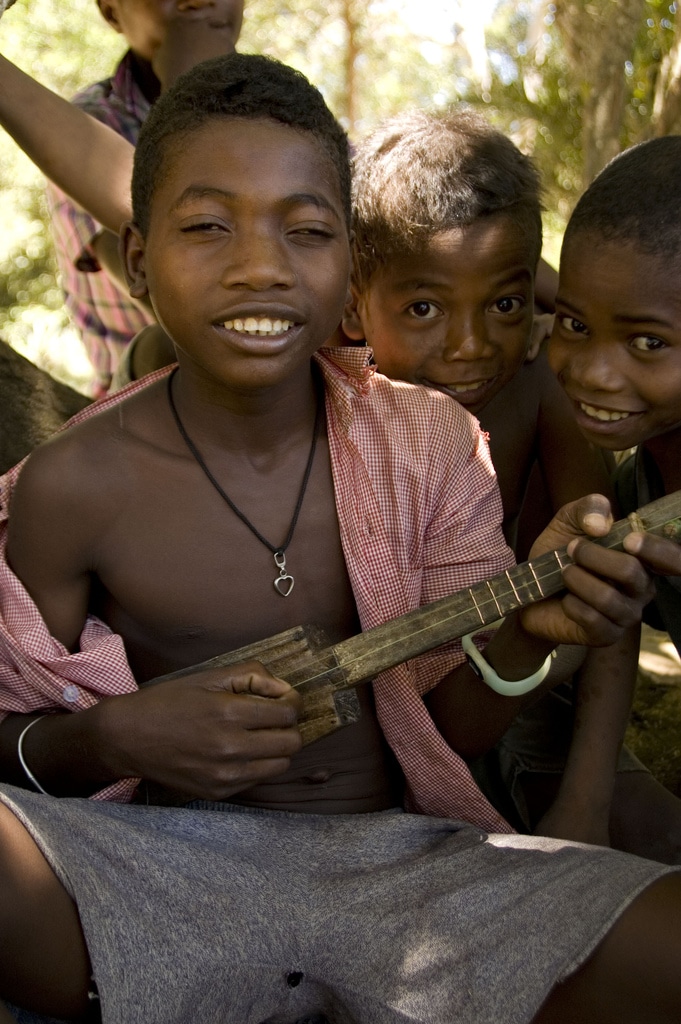The highly diverse and distinctive music of Madagascar has been shaped by the musical traditions of Southeast Asia, Africa, Arabia, England, France and the United States, as and as successive waves of settlers made the island their home. Traditional instruments reflect these extended origins: the mandolin and the kabosy owe their existence to the introduction of the guitar by the first Arab or European sailors, the ubiquitous djembe originated on the African continent and the valiha – the bamboo tube zither considered the national instrument of Madagascar – evolved directly from an earlier form of zither carried by early Austronesian settlers on their outrigger canoes.
Malagasy music can be divided into three categories: traditional, contemporary and popular music. Traditional musical styles vary by region and reflect local ethnographic history. For example, in the Highlands, the valiha and more subdued vocal styles are emblematic of the Merina, the predominantly Austronesian ethnic group that has inhabited the region since at least the 15th century, while among the Bara du sud, whose ancestors can be traced back to the African continent, their a cappella vocal traditions closely resemble the polyharmonic singing style common to South Africa. Foreign instruments such as the acoustic guitar and piano were adapted locally to create uniquely Malagasy forms of music. Contemporary Malagasy musical styles such as the “salegy” where the “tsapiky” evolved from traditional styles modernized by the incorporation of electric guitar, bass, drums and synthesizer. Many Western styles of popular music, including rock, gospel, jazz, reggae, hip-hop, and folk rock, also gained popularity in Madagascar during the second half of the 20th century.
Music in Madagascar has served various sacred and secular functions. In addition to its performance for entertainment or personal creative expression, music has played a key role in historical and contemporary spiritual ceremonies, cultural events, and political functions. By the end of the 19th century, certain instruments and types of music were primarily associated with specific castes or ethnic groups, although these divisions were always fluid and ever-changing.
(wikipedia)
The musical colors of Madagascar
10/17/2020
0 comment



Comment (0)